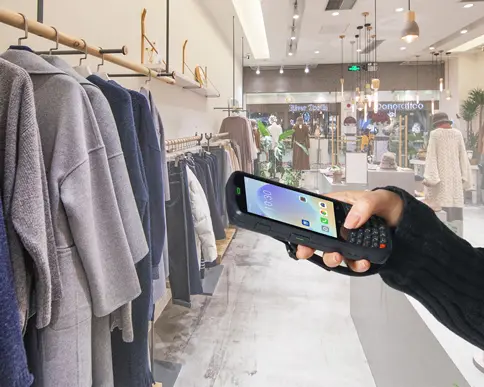Brief Introduction
Their versatility and efficiency make them a vital tool for modern businesses. In this article, we will explore the key components of mobile computers and their diverse functionalities to provide a comprehensive understanding of these devices.

I. Core Components of Mobile Computers
Mobile computers are designed for efficient data collection and processing on the go. Their architecture consists of the following essential components:
1. Processor (CPU)
The CPU serves as the brain of mobile computers, handling all computational tasks. Most mobile computers use ARM-based processors due to their optimal balance between power efficiency and performance. A high-performance CPU enables smooth multitasking and supports complex applications, ensuring a seamless user experience.
2. Memory & Storage
Mobile computers are equipped with RAM for active processes and ROM for firmware storage. Higher RAM capacity improves responsiveness, while expandable storage (via microSD slots) allows users to store large amounts of data and applications.
3. Display Screen
The touchscreen display is the primary user interface, enabling intuitive navigation. Many mobile computers feature high-resolution screens (720p or 1080p) with multi-touch support for enhanced usability. Advanced displays ensure crisp visuals, improving readability in various work environments.
4. Operating System (OS)
Mobile computers typically run specialized OS platforms such as Android, Windows CE, or Linux. These systems provide a user-friendly interface and support industry-specific applications, allowing seamless integration with business workflows.
5. Connectivity Modules
Mobile computers rely on multiple connectivity options, including:
Wi-Fi & Bluetooth – For short-range data transfer and peripheral connectivity.
Cellular (4G/5G) – Enables real-time internet access and communication.
These features ensure uninterrupted data synchronization and remote access.
6. Input Methods
Beyond touchscreens, mobile computers may include:
Physical keypads for faster data entry.
Stylus or handwriting recognition for precise input.
Voice recognition for hands-free operation.
These options enhance flexibility in different work scenarios.
7. Camera & Barcode Scanner
Most mobile computers feature:
A rear camera for capturing images and documentation.
An integrated barcode/QR scanner for rapid data capture.
These tools are crucial in retail, warehousing, and logistics, reducing manual errors and improving efficiency.
8. Battery
Long-lasting battery life is critical for mobile use. Many mobile computers come with high-capacity batteries and fast-charging support to minimize downtime in field operations.
9. Durability & Build Quality
Designed for rugged environments, mobile computers often have:
Shockproof, waterproof, and dustproof casings (e.g., IP67/IP68-rated).
Reinforced materials like polycarbonate or rubberized exteriors.
These features ensure reliability in harsh conditions.
II. Key Functions of Mobile Computers
Mobile computers offer a wide range of applications across industries. Below are their primary functions:
1. Data Collection & Management
With built-in scanners and cameras, mobile computers enable real-time data capture for inventory tracking, logistics, and sales reporting, significantly improving accuracy and efficiency.
2. Real-Time Communication
Cellular and Wi-Fi connectivity allow instant messaging, calls, and access to cloud-based systems, facilitating quick decision-making in time-sensitive operations.
3. Application Support
Mobile computers support industry-specific software, including:
Point-of-Sale (POS) systems for retail transactions.
Warehouse Management Systems (WMS) for inventory control.
Customer Relationship Management (CRM) tools.
4. GPS & Location Tracking
Integrated GPS enables asset tracking, fleet management, and location-based services (LBS), optimizing logistics and field operations.
5. Remote Access
Workers can securely access enterprise databases and cloud services from anywhere, ensuring up-to-date information availability.
6. Multimedia Capabilities
Audio/video recording and playback support training, documentation, and real-time reporting.
7. Security Features
Advanced Mobile Computers incorporate:
Biometric authentication (fingerprint/facial recognition).
Data encryption to protect sensitive information.
These measures safeguard against unauthorized access and data breaches.
Founded in 2002, SEUIC Technologies Co., Ltd. has been committed to grasping core technologies, enhancing technological innovation, providing excellent self-owned brand products, including mobile computers, RFID readers, tablets, barcode scanners and fixed readers. With highly reliable products and efficient services, our products have been widely used in manufacturing, retail, logistics & transportation, healthcare and other industries. We provide frontline workers more durable real-time data collection tools, helping you do more thereby to catapult your productivity to the next level.- What Are the Core Functions of Mobile Computers?2025-04-08
- Mobile Computers: Usage Guide and Operational Tips2025-04-07
- What Are the Key Features of Mobile Computers?2025-04-03
- What Are the Application Areas of Mobile Computers?2025-04-02
- The Basic Components and Functions of Mobile Computers2025-04-01